Author Photo And Bio
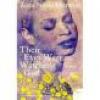 1. Their Eyes Were Watching God by Zora Neale Hurston (1937). Beautiful and high-spirited Janie Crawford wants love and adventure. But, as Hurston shows in her finest novel, living in an all-black town is no shield against the sexism that dictates her young life. Forced to marry one controlling old geezer, she deserts him only to end up with another. When she marries Tea Cake, Janie finally enjoys the essence of a true relationship. Her happiness is short-lived when disaster strikes, but it becomes the catalyst for ultimate self-discovery.
1. Their Eyes Were Watching God by Zora Neale Hurston (1937). Beautiful and high-spirited Janie Crawford wants love and adventure. But, as Hurston shows in her finest novel, living in an all-black town is no shield against the sexism that dictates her young life. Forced to marry one controlling old geezer, she deserts him only to end up with another. When she marries Tea Cake, Janie finally enjoys the essence of a true relationship. Her happiness is short-lived when disaster strikes, but it becomes the catalyst for ultimate self-discovery.
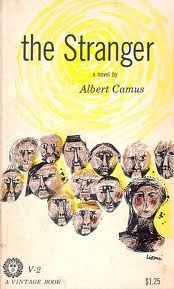 2. The Stranger by Albert Camus (1942). The opening lines—“Mother died today. Or, maybe, yesterday. I can’t be sure”—epitomize Camus’s celebrated notions of “the absurd.” His narrator, Meursault, a wretched little Algerian clerk sentenced to death for the murder, feels nothing: no remorse, love, guilt, grief, or hope. But he’s not a sociopath; he’s just honest. An embodiment of existential philosophy, he believes in no higher power and accepts that we are born only to die. Our only choice is to act “as if” life has meaning and thereby gain some freedom.
2. The Stranger by Albert Camus (1942). The opening lines—“Mother died today. Or, maybe, yesterday. I can’t be sure”—epitomize Camus’s celebrated notions of “the absurd.” His narrator, Meursault, a wretched little Algerian clerk sentenced to death for the murder, feels nothing: no remorse, love, guilt, grief, or hope. But he’s not a sociopath; he’s just honest. An embodiment of existential philosophy, he believes in no higher power and accepts that we are born only to die. Our only choice is to act “as if” life has meaning and thereby gain some freedom.
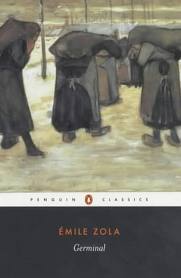 3. Germinal by Émile Zola (1884). As in old pictures of Pittsburgh, a pall of industrial smoke seems to hang over Zola’s grim, stirring novel about a miners strike. Zola uses his usual style of fine-grained graininess to describe the lives crushed (sometimes literally) by work, and the excessive poverty to which the miners’ families seem condemned. His is a collective portrait in which his main character, Etienne Lantier, gets engulfed by the hugeness and dangerousness of the mines (which bear the sinister nickname Le Voreux, or “the voracious ones”) and the eventual revolt against the mining company.
3. Germinal by Émile Zola (1884). As in old pictures of Pittsburgh, a pall of industrial smoke seems to hang over Zola’s grim, stirring novel about a miners strike. Zola uses his usual style of fine-grained graininess to describe the lives crushed (sometimes literally) by work, and the excessive poverty to which the miners’ families seem condemned. His is a collective portrait in which his main character, Etienne Lantier, gets engulfed by the hugeness and dangerousness of the mines (which bear the sinister nickname Le Voreux, or “the voracious ones”) and the eventual revolt against the mining company.
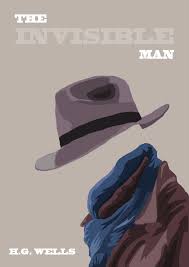 4. Invisible Man by Ralph Ellison (1952). This modernist novel follows the bizarre, often surreal adventures of an unnamed narrator, a black man, whose identity becomes a battleground in racially divided America. Expected to be submissive and obedient in the South, he must decipher the often contradictory rules whites set for a black man’s behavior. Traveling north to Harlem, he meets white leaders intent on controlling and manipulating him. Desperate to seize control of his life, he imitates Dostoevsky’s underground man, escaping down a manhole where he vows to remain until he can define himself. The book’s famous last line, “Who knows, but that on the lower frequencies I speak for you,” suggests how it transcends race to tell a universal story of the quest for self-determination.
4. Invisible Man by Ralph Ellison (1952). This modernist novel follows the bizarre, often surreal adventures of an unnamed narrator, a black man, whose identity becomes a battleground in racially divided America. Expected to be submissive and obedient in the South, he must decipher the often contradictory rules whites set for a black man’s behavior. Traveling north to Harlem, he meets white leaders intent on controlling and manipulating him. Desperate to seize control of his life, he imitates Dostoevsky’s underground man, escaping down a manhole where he vows to remain until he can define himself. The book’s famous last line, “Who knows, but that on the lower frequencies I speak for you,” suggests how it transcends race to tell a universal story of the quest for self-determination.
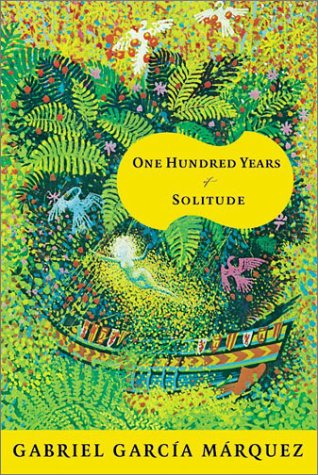 5. One Hundred Years of Solitude by Gabriel García Márquez (1967). Widely considered the most popular work in Spanish since Don Quixote, this novel —part fantasy, part social history of Colombia — sparked fiction’s “Latin boom” and the popularization of magic realism. Over a century that seems to move backward and forward simultaneously, the forgotten and offhandedly magical village of Macondo — home to a Faulknerian plethora of incest, floods, massacres, civil wars, dreamers, prudes, and prostitutes — loses its Edenic innocence as it is increasingly exposed to civilization.
5. One Hundred Years of Solitude by Gabriel García Márquez (1967). Widely considered the most popular work in Spanish since Don Quixote, this novel —part fantasy, part social history of Colombia — sparked fiction’s “Latin boom” and the popularization of magic realism. Over a century that seems to move backward and forward simultaneously, the forgotten and offhandedly magical village of Macondo — home to a Faulknerian plethora of incest, floods, massacres, civil wars, dreamers, prudes, and prostitutes — loses its Edenic innocence as it is increasingly exposed to civilization.
 6. Beloved by Toni Morrison (1987). It’s a choice no mother should have to make. In 1856, escaped slave Margaret Garner decided to kill her infant daughter rather than return her to slavery. Her desperate act created a national sensation. Where Garner’s true-life drama ends, Beloved begins. In this Pulitzer Prize–winning novel, the murdered child, Beloved, returns from the grave years later to haunt her mother Sethe. Aided by her daughter Denver and lover Paul D, Sethe confronts the all-consuming guilt precipitated by the ghostly embodiment of her dead child. Rendered in poetic language, Beloved is a stunning indictment of slavery “full of baby’s venom.”
6. Beloved by Toni Morrison (1987). It’s a choice no mother should have to make. In 1856, escaped slave Margaret Garner decided to kill her infant daughter rather than return her to slavery. Her desperate act created a national sensation. Where Garner’s true-life drama ends, Beloved begins. In this Pulitzer Prize–winning novel, the murdered child, Beloved, returns from the grave years later to haunt her mother Sethe. Aided by her daughter Denver and lover Paul D, Sethe confronts the all-consuming guilt precipitated by the ghostly embodiment of her dead child. Rendered in poetic language, Beloved is a stunning indictment of slavery “full of baby’s venom.”
 7. Night by Elie Wiesel (1958). In this harrowing memoir of the Holocaust, Wiesel describes his journey from a religious Jewish childhood in Hungary to the Nazi concentration camps. Subsisting on bread and soup, forced to watch prisoner executions, the fifteen-year-old narrator struggles to support his father, who eventually dies one night in the cot below his. Ultimately freed by American soldiers, he is scarred by images that “consumed my faith forever” and “turned my life into one long night.”
7. Night by Elie Wiesel (1958). In this harrowing memoir of the Holocaust, Wiesel describes his journey from a religious Jewish childhood in Hungary to the Nazi concentration camps. Subsisting on bread and soup, forced to watch prisoner executions, the fifteen-year-old narrator struggles to support his father, who eventually dies one night in the cot below his. Ultimately freed by American soldiers, he is scarred by images that “consumed my faith forever” and “turned my life into one long night.”
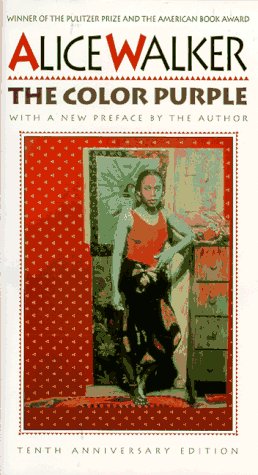 8. The Color Purple by Alice Walker (1982). As if being black weren’t hard enough, Walker’s Pulitzer Prize– winning novel shows how bad life can get if you’re also a woman. Wondrously, Walker gives voice to the unlikeliest of heroes —a barely literate teenager named Celie who writes letters to God as an escape from life with her monstrous stepfather. After raping and impregnating her, he forces her to marry Mr., a cruel older man. Hope comes in the form of Shug, Mr.’s lover, and together the two women begin to loosen the shackles of race and gender.
8. The Color Purple by Alice Walker (1982). As if being black weren’t hard enough, Walker’s Pulitzer Prize– winning novel shows how bad life can get if you’re also a woman. Wondrously, Walker gives voice to the unlikeliest of heroes —a barely literate teenager named Celie who writes letters to God as an escape from life with her monstrous stepfather. After raping and impregnating her, he forces her to marry Mr., a cruel older man. Hope comes in the form of Shug, Mr.’s lover, and together the two women begin to loosen the shackles of race and gender.
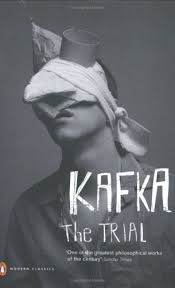 9. The Trial by Franz Kafka (1925). The Trial is not just a book, but a cultural icon; Kafka is not just a writer but a mindset—“Kafkaesque.” Here, Everyman Josef K is persecuted by a mysterious and sadistic Law, which has condemned him in advance for a crime of which he knows nothing. Modern anxieties are given near-archetypal form in this parable that seems both to foretell the totalitarian societies to come and to mourn our alienation from a terrible Old Testament God.
9. The Trial by Franz Kafka (1925). The Trial is not just a book, but a cultural icon; Kafka is not just a writer but a mindset—“Kafkaesque.” Here, Everyman Josef K is persecuted by a mysterious and sadistic Law, which has condemned him in advance for a crime of which he knows nothing. Modern anxieties are given near-archetypal form in this parable that seems both to foretell the totalitarian societies to come and to mourn our alienation from a terrible Old Testament God.
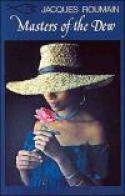 10. Masters of the Dew by Jacques Roumain (1947).
10. Masters of the Dew by Jacques Roumain (1947).
Appreciation of Jacques Roumain’s Masters of the Dew by Edwidge Danticat
This novel charmed Langston Hughes and Mercer Cook so much that when they visited Haiti in the 1940s they decided to translate it. Theirs remains the only English translation. This is the plot: A Haitian young man goes to Cuba to cut sugarcane in the 1930s. When he returns to his village in rural Haiti, he finds that a drought has ravaged the entire area and a Romeo and Juliet–type feud between the two most powerful families stands in the community’s way of finding a solution.
Like Romeo, the young man, Manuel, falls in love with the stunning daughter of the family that despises his and a battle ensues that results in tragedy, with some measure of hope. (To say much more would be giving away too much of the plot of this slim volume.) The book has often been called a peasant novel, but it is also an environmental novel, as well as a love story.
I read this book when I was ten years old; it was the first novel in which I recognized people I knew living in circumstances similar to my life and my world. It was also the first time that I realized books could not only help us escape but hold a mirror to our lives, to help us examine a problem and ponder —along with the characters —a possible solution. It was my first engagée or socially engaged novel, one that showed me that the novel could have many roles, that fiction could be used for different purposes without losing its artistic merit. It made me want to write the types of books that could inform and entertain as well as help others live, through a powerful narrative, a heartbreaking, painful, and even redemptive experience.